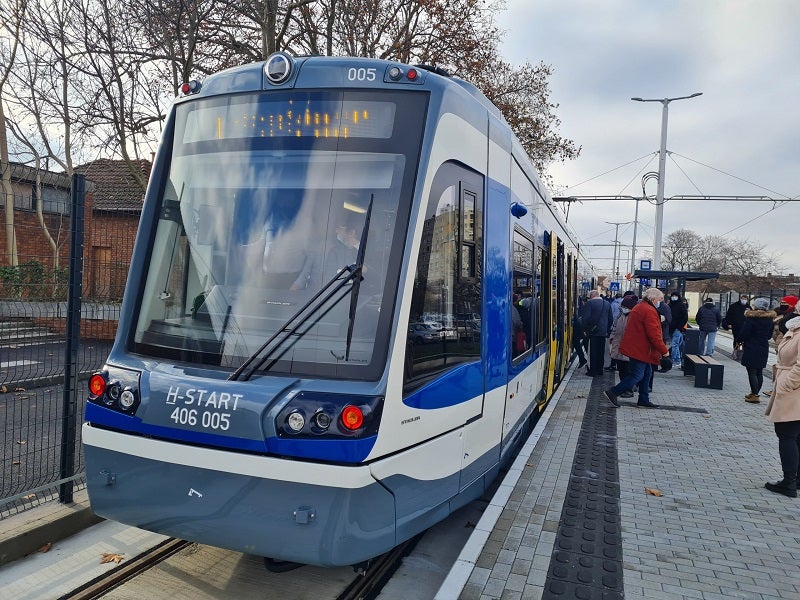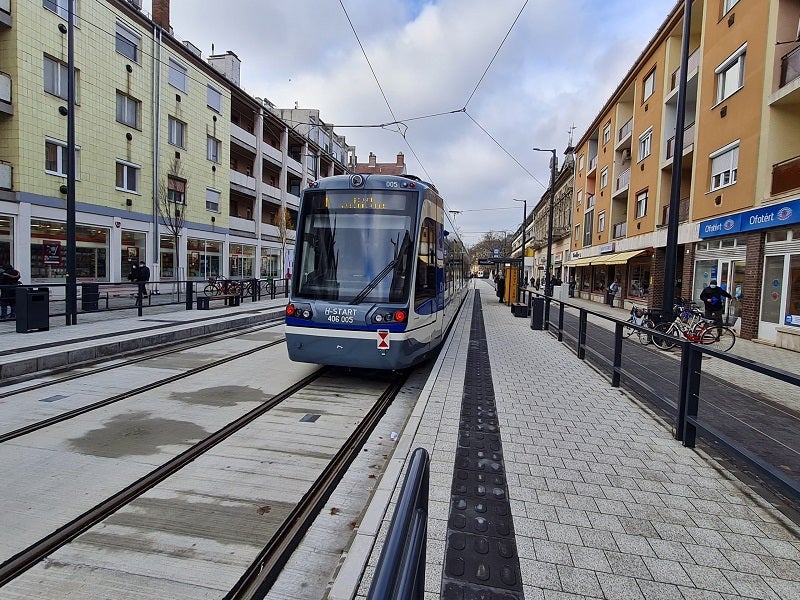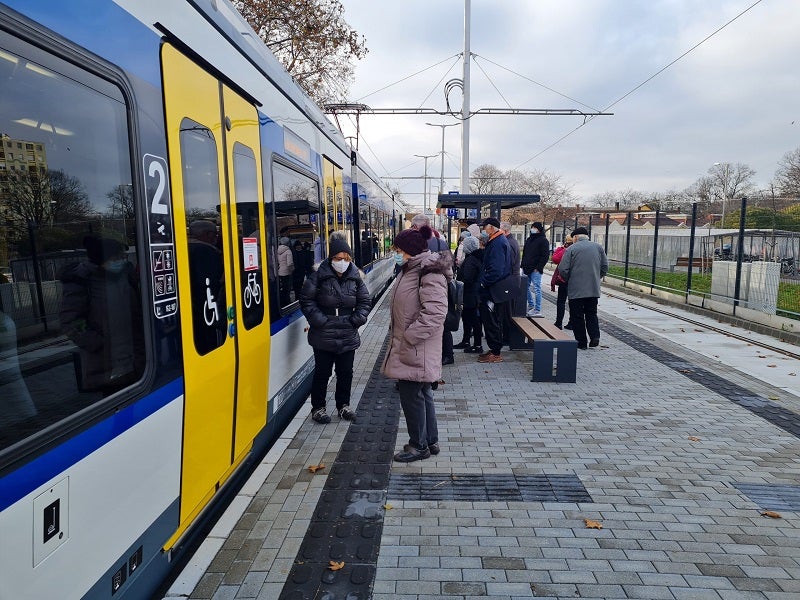The Hódmezővásárhely-Szeged tram-train is Hungary’s first public tram-train system. It links Hódmezővásárhely and Szeged cities in Csongrád county in southern Hungary. Providing a transfer-free connection between the two city centres, the tram-train system became fully operational in November 2021.
Construction began in April 2018 and the system is operated by Hungarian national train operator MÁV-Start.
Hódmezővásárhely-Szeged tram-train project objectives
The project aims to establish a sustainable and safe alternative to private car transportation. The connection between the two downtowns with a direct fixed railway track will reduce the travel time and increase accessibility. It will also enhance the competitiveness of public transportation.
Hungary’s first public tram-train project details
The project involved the construction of a 3.6km-long single-track tram line between the Hódmezővásárhely Népkert railway station and the Hódmezővásárhely railway terminal. The line includes two traffic bypasses and a two-track tram-train terminal.
The tram line passes through five stations including the Hódmezővásárhely Folk Garden, Strandfürdő, Hősök tere, Kossuth tér, Kálvin János tér, and a double-track terminal near Hódmezővásárhely main station.
The tram-train deviates from the main railway line at the Hódmezővásárhely Népkert junction and switches to tram operation. It then runs via Ady Endre utca, Tóalj utca, Szőnyi utca, Andrássy út and Bajcsy-Zsilinszky utca before terminating near the Hódmezővásárhely station.
Design and features
The tram-train service includes 12 hybrid vehicles capable of operating safely on both urban tram and rail networks. The Citylink bi-directional, dual-mode vehicles are designed to meet the latest safety standards. The low-floor and barrier-free configuration enables easy accessibility to people with limited mobility. The travel time between the two cities has been reduced to less than 40 minutes.
The Citylink has a lightweight maintenance-free design and its car bodies are made of high-strength stainless steel. It features a wide cabin, as well as four double-leaf doors on each side and a ramp system.
The 37.2m-long and 2.65m-wide diesel-electric hybrid tram-train weighs about 71t and can accommodate 216 passengers. It features 92 seats, of which 16 are foldable and four are wheelchair-accessible.
The tram-train has two multi-purpose spaces to accommodate wheelchairs, prams, and bicycles.
Amenities include an advanced passenger information system, air conditioning, Wi-Fi, charging points for mobiles and laptops, and a state-of-the-art onboard security camera system.
The vehicles are powered by the 600V DC overhead line network in the two cities, as well as two low-emission 390kW diesel power-packs on the main railway line connecting the two cities.
Designed to run at a maximum speed of 100km/h, the vehicles can travel at a maximum speed of 50km/h, while diesel-powered operation on the open line is expected to increase the speeds up to 80km/h, in line with the regulations.
Construction details
The Hódmezővásárhely-Szeged tram-train project includes the building of tramways, stations, pavements, parking lots, and public road junctions.
The 22km-long Szeged-Rókus Branch-Hódmezővásárhely Népkert station section was renovated to meet the requirements for the existing track speed of 100km/h.
The construction works also included a new second track between the Szeged Rókus-Baktó Branch and the Sártó Branch-Kopáncs station. The Algyő Tisza Bridge over the Tisza River was also repaired as part of the project.
The Algyo station was renovated with a new passenger platform, and a park-and-ride car park. The building was reconstructed partially, while the Hódmezővásárhely Nepkert station was entirely rebuilt.
The central traffic control on the Szeged Rókus Branch-Hódmezővásárhely People’s Garden route had to be constructed, and its safety equipment reconstructed. Multiple park-and-ride parking lots and 900 bicycle storage spaces were created in Hódmezővásárhely.
Funding
The total investment in the tram-train project is estimated at HUF80bn ($270.64m). The project is supported by funding from Nemzeti Infrastruktúra Fejlesztő (NIF), a state-owned infrastructure development company. The European Union also provided funding for the project.
The Hungarian Ministry of National Development awarded grants worth HUF17.62bn ($53.83bn) for the purchase of eight new hybrid tram-train vehicles. The grant also covers funding for other components including the procurement of the underground bicycle lathe equipment for the construction of a tram-train maintenance base in Szeged.
Contractors involved
A consortium of TRENECON COWI, Főmterv, and Forrás Unió was engaged to prepare a feasibility study for the establishment of public transportation connections between Hódmezővásárhely and Szeged.
VAMAV Vasúti Berendezések, a joint venture between MÁV Hungarian State Railways and voestalpine Railway Systems, was selected to provide turnouts for the project in 2018.
MÁV-START awarded a contract to Swiss rolling stock manufacturer Stadler for the delivery of eight bi-mode tram-train vehicles in May 2017. The company received another order for the delivery of four additional Citylink tram-trains.
Hungarian railway construction company Swietelsky Vasúttechnika was awarded the contract for the construction works of the project. Utiber, an engineering consultant, provided the construction plans for the reconstruction of large railways as part of the project. Főmterv was appointed to prepare the construction plan for the urban railway infrastructure.
Homlok, a construction firm based in Hungary, was awarded a contract for the construction of a tram-train maintenance facility at the Szeged-Rendező railway station.






